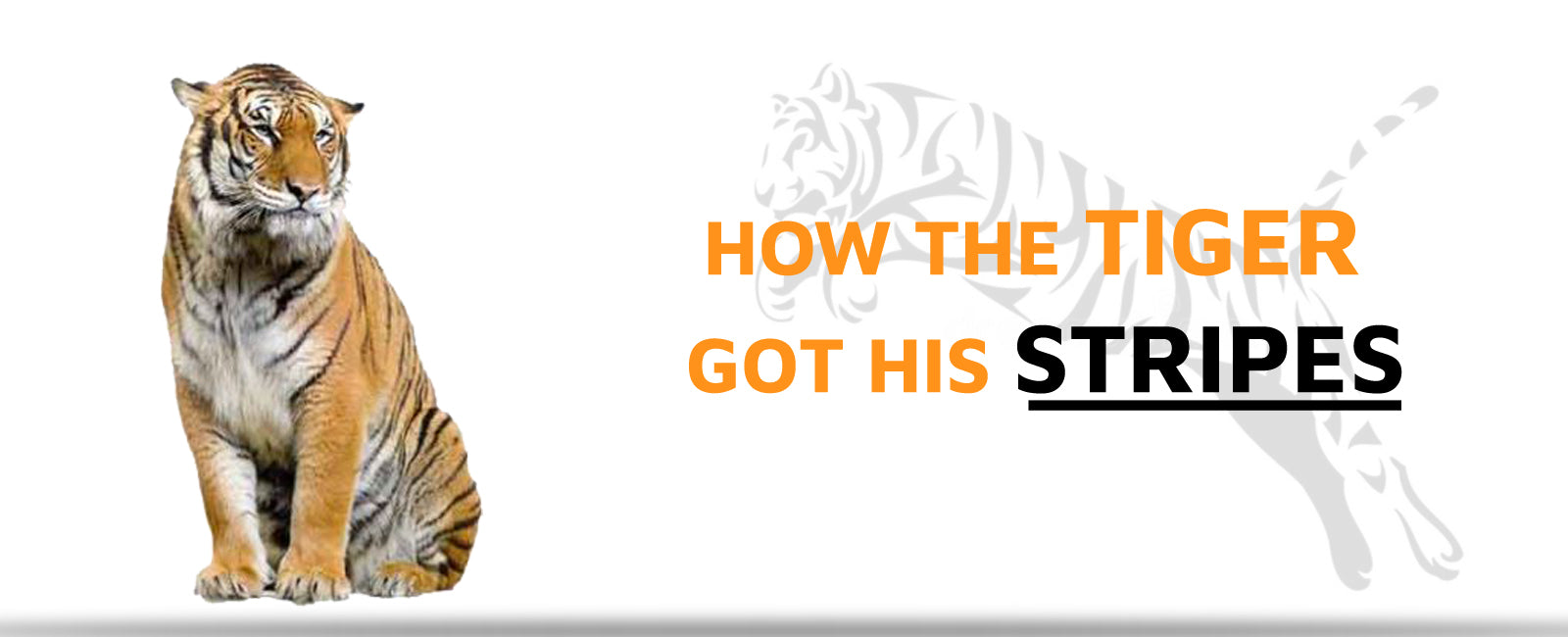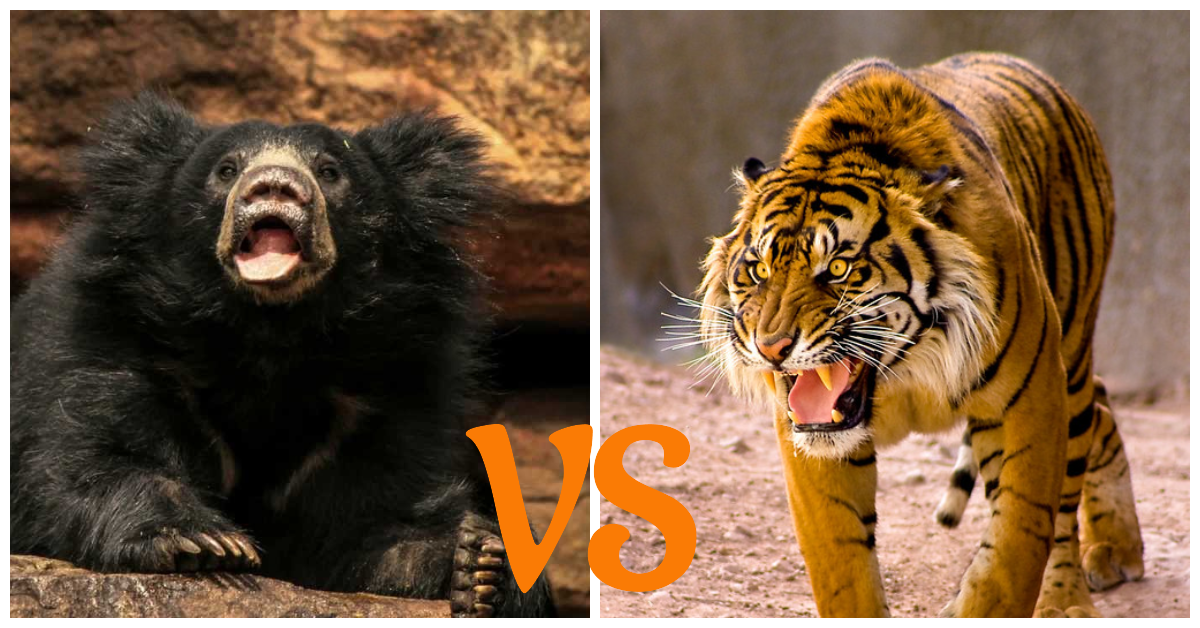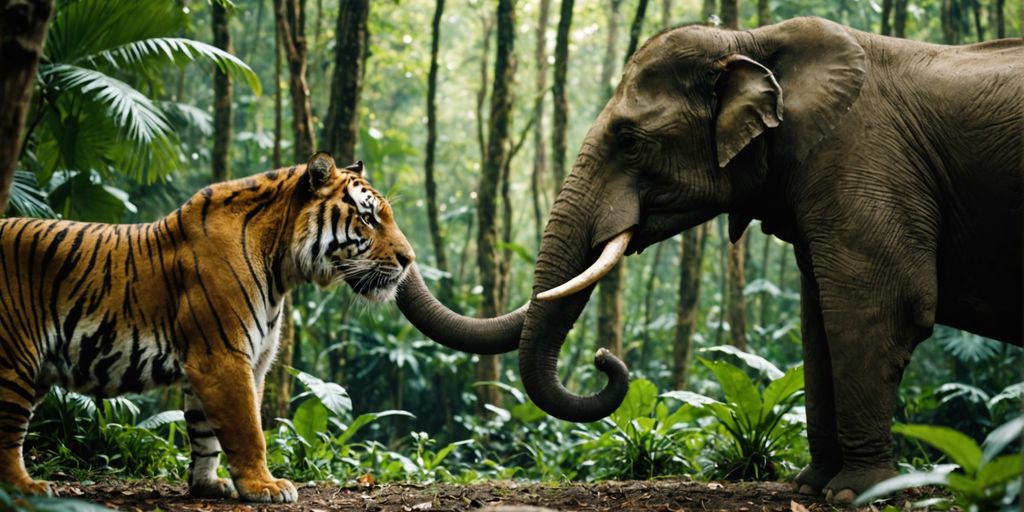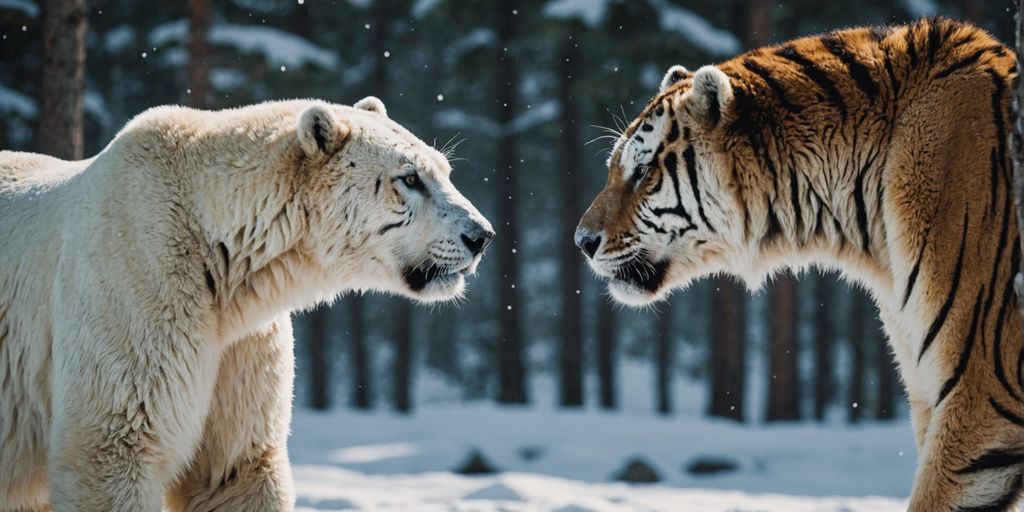Your Cart is Empty
🙏HELP US SAVE TIGERS!🐅 WE DONATE 1% OF OUR SALES TO WILDLIFE ORGANIZATIONS ( WWF ...)
Menu

🙏HELP US SAVE TIGERS!🐅 WE DONATE 1% OF OUR SALES TO WILDLIFE ORGANIZATIONS ( WWF ...)
How Many Stripes Does a Tiger Have
May 28, 2021 12 min read

Passionate about the Tigers, Tiger-Universe knows the answer to all your questions about the stripes of these felines and will explain everything to you.
Have you ever thought about how many stripes does a tiger have?
The number of stripes on a tiger varies among different subspecies, but the average number of stripes on a Bengal tiger is around 100.
Other tiger subspecies, such as the Sumatran tiger and the Siberian tiger, may have fewer stripes or wider stripes compared to the Bengal tiger.
Have you ever thought about why tigers have stripes on their bodies? Is it possible to differentiate the different subspecies of the Tiger thanks to its bars?
Why is the tiger-striped? This Fawn has stripes to camouflage itself. It is also a way to differentiate each individual of the species. Indeed, the lines of these felines are not just a simple coloration on their coat. It is a bit like our fingerprints.
In this article, you will discover :
- Cases where the Tiger needs its stripes in the wild
- How to differentiate each Tiger by subspecies
- If there are wild tigers without stripes
By the end of this article, the stripes of these cats will no longer hold any secrets for you. You may even know more than the Tiger itself. Let's get started!
I. Brief overview of tiger stripes
Tiger stripes are one of the most distinctive features of this magnificent big cat. They are made up of dark, vertical stripes that run down the length of the tiger's body and are set against a lighter-colored background. Tiger stripes serve several purposes, including helping wild tigers to blend in with their surroundings and providing camouflage during hunting.
Understanding tiger stripes is crucial for anyone interested in these animals, whether they are researchers, conservationists, or simply fans of these majestic creatures. By learning about the anatomy, pattern, and purpose of tiger stripes, we can gain a better appreciation of these big cats and their place in the natural world.
II. The Anatomy of Tiger Stripes
The anatomy of tiger zebra stripes is an intricate and fascinating topic that requires a detailed understanding of the location, formation, structure, and composition of tiger fur.
Tiger stripes are formed by pigments in the skin known as melanocytes, which produce the dark coloration that gives the stripes their distinctive appearance. The location of the stripes is determined by the distribution of melanocytes in the skin. Melanocytes are not evenly distributed across the body, which explains why tiger stripes are not uniform in shape or size.
The structure and composition of tiger fur also play a critical role in the formation of stripes. Tiger fur consists of three layers: the guard hairs, the awn hairs, and the downy undercoat. The guard hairs are the longest and most visible hairs and are responsible for the tiger's overall appearance. The awn hairs are shorter and provide additional insulation, while the downy undercoat is the softest and most insulating layer.
The dark coloration of the tiger stripes is produced by pigments known as eumelanin and pheomelanin, which are contained in the melanocytes in the skin. The arrangement of these pigments is what creates the distinctive stripe pattern on the fur. The number and width of the stripes can vary greatly between individuals and different subspecies omakinggers, which is determined by genetic factors.
III. The Significance of Tiger Stripes in Survival
Tiger stripes play a critical role in the survival of tigers by helping them to blend in with their surroundings and providing camouflage during hunting.
The dark stripes on the tiger's fur help to break up the outline of their body, making it difficult for prey to detect them. In addition, the stripes mimic the pattern of light and shadow in the tiger's environment, allowing them to blend in with their surroundings and remain hidden from potential threats.
Tiger stripes are particularly effective in providing camouflage during hunting. Tigers are known for their stealthy hunting tactics and rely on their ability to remain undetected by prey until they are within striking distance. The stripes on their fur make it easier for them to approach prey undetected, giving them a greater chance of success in their hunts.
Furthermore, the distinctiveness of tiger stripes also plays a role in their social behavior. Each tiger has a unique stripe pattern, which helps individuals to recognize one another and identify potential mates.
IV. The Number of Stripes on a Tiger
The number of stripes on a tiger is a highly variable feature that can differ greatly between individuals and subspecies.
The Bengal tiger, which is the most common subspecies of tiger, typically has an average of around 100 stripes. However, this number can vary widely depending on the individual tiger, with some tigers having as few as 70 stripes and others having as many as 150 stripes.
Other subspecies of tigers also exhibit variations in the number of stripes. For example, the Sumatran tiger is known for having narrower stripes than other subspecies, while the Siberian tiger is known for having thicker and more closely spaced stripes. The Malayan tiger, on the other hand, has the fewest number of stripes, with some individuals having only 40 to 50 stripes.
The number of stripes on a tiger is determined by a combination of genetic and environmental factors. Genetic factors, such as the inheritance of specific genes that regulate the production of melanin, play a significant role in determining the pattern and number of stripes on a tiger's fur.
Environmental factors, such as exposure to sunlight and other environmental stressors, can also affect the number and appearance of tiger stripes.
V. Different Types of Tiger Stripes
Tiger stripes are one of the most distinctive physical features of these big cats, with a wide range of stripe types and patterns present among different subspecies.
The most common type of tiger stripe is the classic vertical stripe, which runs down the length of the tiger's body. These stripes can vary in width and spacing, and are typically black or dark brown in color. Other types of stripes include horizontal stripes, which occur on the face and legs of the tiger, and broken stripes, which are interrupted or irregular in shape.
In addition to these basic stripe types, wild tigers can also exhibit more complex patterns such as rosettes and spots. Rosettes are circular or oval-shaped markings that have a dark outline and a lighter interior, while spots are smaller markings that can occur between or within the larger stripes.
Examples of these different types of stripes can be seen across various tiger subspecies. For instance, the Bengal tiger is known for its classic vertical stripes, while the Siberian tiger has thicker and more closely spaced stripes.
The Sumatran tiger subspecies have narrow stripes and prominent rosettes, while the Malayan tiger has a unique stripe pattern with widely spaced stripes and prominent triangular markings.
VI. The Pattern and Spacing of Tiger Stripes
The pattern and spacing of tiger stripes are important factors that contribute to the tiger's unique appearance and camouflage abilities. The stripes on a tiger's body are arranged in a way that is highly optimized for concealing the animal in its natural habitat.
Tiger stripes are arranged perpendicular to the body's shape, which helps to break up the outline of the tiger's body and make it harder to detect by prey or predators. The stripes are also spaced and shaped in a way that allows the tiger to blend into its surroundings, with narrower stripes occurring in areas where the body is more curved or textured.
In addition to camouflage, the pattern and spacing of tiger stripes are also significant for identifying individual tigers and for social behaviors such as mate selection and territorial marking. Tigers can recognize one another based on their unique stripe patterns, and males may use their stripes to signal dominance or attract mates.
The spacing and shape of tiger stripes can also vary among different subspecies of tiger. For example, the Siberian tiger has stripes that are closer together and more numerous than other subspecies, which may help it to adapt to its colder climate by providing additional insulation.
VII. The Purpose of Tiger Stripes
Tiger stripes serve a number of important functions, ranging from camouflage and hunting to social communication and individual identification. These unique physical features are crucial for the survival of tigers in the wild, allowing them to thrive in a range of different habitats.
One of the primary purposes of tiger stripes is camouflage. By breaking up the outline of the tiger's body and helping it to blend in with its surroundings, the stripes allow the animal to remain hidden from prey and predators alike. This makes it easier for the tiger to approach its prey without being detected, and to avoid detection by their preferred prey.
In addition to camouflage, tiger stripes also play a role in hunting. The vertical stripes on a tiger's body help to create an illusion of depth and movement, which can confuse and disorient prey. This can make it easier for the tiger to get close enough to attack and capture its prey.
Tiger stripes also serve social and communicative functions. By using their unique stripe patterns to recognize one another, tigers are able to identify members of their own social group and avoid conflicts with unfamiliar individuals. Male tigers may also use their stripes to signal dominance or attract mates, while female tigers may use their stripes to communicate with their cubs or to mark their territory.
VIII. Evolution of Tiger Stripes
The evolution of tiger stripes is a fascinating topic that sheds light on the complex history of these magnificent big cats. While the precise origins of tiger stripes are not entirely clear, scientists believe that they evolved over millions of years in response to a variety of different factors.
One theory suggests that tiger stripes may have developed as a form of camouflage, allowing these animals to blend in with their surroundings and remain hidden from predators and prey alike. Over time, these stripes may have become more pronounced and varied in order to provide better protection in different habitats, such as dense forests or open grasslands.
Another theory suggests that tiger stripes may have evolved as a form of social communication, allowing tigers to recognize one another and avoid conflicts within their social groups. As tigers became more social and began to live in larger groups, their stripe patterns may have become more complex and distinct in order to facilitate this type of communication.
Regardless of their precise origins, tiger stripes have undoubtedly played a critical role in the survival and success of these majestic big cats. As tigers have adapted to different environments and evolved over time, their stripes have continued to change and develop, providing them with a range of different benefits and advantages in the wild.
Tales that tell about the Origin of Tiger Stripes
There are many little stories about why the Tiger has stripes. Its stripes are present because of a burn, a sunburn, or traces of bars. In any case, they are present as a lesson for the feline who made a mistake. There is usually a moral to these stories.
If you were to read only one, we recommend reading The Day the Tiger Got Stripes; it is a Vietnamese story.
It would make a perfect story to tell your child before he goes to sleep. He could also have a stuffed tiger friend to watch over him. Anyway, let's get to the real reasons.
An effective camouflage
The Tiger uses its stripes as camouflage to hide in the brush, tall grass, bamboo, etc. Indeed, the animal is not as fast as its feline cousins, such as the Leopard or the Cheetah; it must eliminate its prey by surprise.
Its stripes camouflage it perfectly in the forest, thanks to the play of shadows and lights. Combined with the fact that the Fawn hunts mostly at night, it is tough to see.
Nature does it right! Let's take the example of the African lion. Its coat has a color resembling the tall grass of the savannah, and it hunts during the day. His color is therefore consistent for him as well in terms of his natural environment. The color of the coat of every feline is always there for a reason.
Unfortunately, due to deforestation, tigers find themselves more and more exposed and threatened. Their territories are decreasing year after year and make them more and more vulnerable. If you are interested in this subject, here are the consequences of deforestation on animals. You will discover that this does not only affect the Tiger.

A way to differentiate each individual
Even before it is born, the Tiger begins to have stripes on its body. This will define it as an individual within the species. It a bit like our identity card. They also allow specialists to identify each individual in the wild more easily.
Indeed, no two tigers have the same pattern. However, most of the tiger subspecies have their type of pattern. Each individual of these subspecies can still be differentiated. Also, stripes are not just a part of the Tiger's fur.
Do you want proof? Very well, here is one! You can see that even without its fur, the beast will still have its stripes in the picture below. Incredible, isn't it?
Are there tigers without stripes?
This section will allow you to see in more detail why stripes are essential to the Tiger. After much research, we have not found any evidence of a tiger without bars (or at least no severe sources) outside of fictional works.
On the other hand, two tigers have stripes but in different colors, just like their coat. These are the white Tiger and the Golden Tiger. Both tigers do not exist in the wild. They are all in captivity.
The white tigers are very well known. We have often talked about them on our blog. Its color is due to a genetic mutation, leucism. The Golden Tiger has a light red coat, and the bottom of the body is cream. Its colors are also due to a genetic mutation.
Both tigers could hardly survive in the wild as their color does not allow them to camouflage well. They could not hunt their prey. They would also be easily tracked by their (only) predator, the man.
To help you survive and dominate your environment like the Tiger (with stripes, of course), we offer you our Tiger Stripe T-Shirt available by clicking on the image below.
What are the different types of Tigers?
We could see previously what was the purpose of the stripes of this Fawn. These stripes are, among other things, a way to differentiate each individual. They are unique for each of them.
However, each subspecies is recognizable by any means, including the stripes. Indeed, each subspecies has more or less an overall shape of lines that are unique to it. We will now explain how to differentiate them all.
What makes a Bengal tiger different from a Siberian tiger?
First and foremost, let's look at the two most well-known tigers. The Bengal tiger is the most populous subspecies, and the Siberian Tiger is the largest of the tigers. At first glance, these tigers (and all the others we will see later) all look alike. However, they all have their tiny differences in their fur (and elsewhere) that allow us to recognize them.
Let's take a look at their coat. The coat of the Bengal tigers (picture above) are orange with black stripes, which sometimes turn grey. The Siberian Tiger (image below) is more of a reddish-brown color. It generally has lighter color.
We can also see that the Siberian Tiger has denser hair than his cousin. This is what allows him to resist the great cold in Russia. Not easy to differentiate. Don't worry, once we know all this and by dint of observing them, we determine them more easily.
The other types of Tigers
It is now time to look at the other four members of the tiger tribe officially recognized by the IUCN. In the past, there were nine subspecies in total. Unfortunately, three of them have disappeared; the Bali tiger, the Java tiger, and the Caspian tiger. You will soon know how to differentiate all types of tigers (at least all subspecies still alive).
The South China tiger (pictured above) has a rather short snout and closer-set eyes. This gives the impression that it has a rounder head. It is also the Tiger with the most stripes along its body. It also has a somewhat compact size.
The Sumatran tiger is the tiger subspecies with the smallest size. It has darker skin than other tigers. It has the least extensive white coat as well. The vast majority of its stripes are double. The males have the particularity of having a large collar of fur around the neck. You can find out more on our blog post dedicated to the Sumatran tiger.
The Indochinese Tiger is a tiger with a rather dark orange color. It has relatively short and numerous stripes. It usually has more pronounced white tiger's markings.
The Malayan Tiger looks a lot like the Indochinese Tiger. It looks so much like him that it is difficult to recognize them in appearance. We can only differentiate them by their size (the Malayan Tiger is smaller than its counterpart) or by analyzing their DNA (not given to everyone...).
Do Tigers Stripes make the Tiger's Charisma?
Congratulations, you now know everything about the stripes of these majestic tigers. We have seen that their stripes are a way to blend into their environment to surprise their prey. It is also a way for them to differentiate themselves individually. I think we can say with certainty that stripes play an essential role in the charisma of the Tiger.
You now know everything about the Tiger's stripes, and you are now an expert in differentiating its subspecies. You can be proud of yourself because this is not an easy task.
We can be sure that the stripes are therefore essential for the Tiger to mark its identity, dominate and make him the king of the animals.
That's why we also offer clothes and accessories with the stripes of this majestic Fawn. Being a solid symbol of individuality and marginality, they will be perfect for bringing out the best in you. Discover our Tiger Stripes Sweatshirt, and you too can dominate your natural environment.
Also in Tiger Blog

Sloth Bear vs Tiger: Who Would Win?
July 13, 2024 7 min read
Explore the thrilling showdown between a sloth bear and a tiger, analyzing their strengths, behaviors, and survival tactics.
Read More
Tiger vs Elephant: Who Reigns Supreme in the Animal Kingdom?
July 13, 2024 7 min read
Explore why elephants usually triumph over tigers in the wild, highlighting their size, strength, and defensive prowess.
Read More
Epic Battle: Polar Bear vs Tiger, who win?
July 11, 2024 8 min read
Epic showdown: Polar Bear vs Tiger. Discover who would win in this thrilling battle of nature's fiercest predators.
Read More